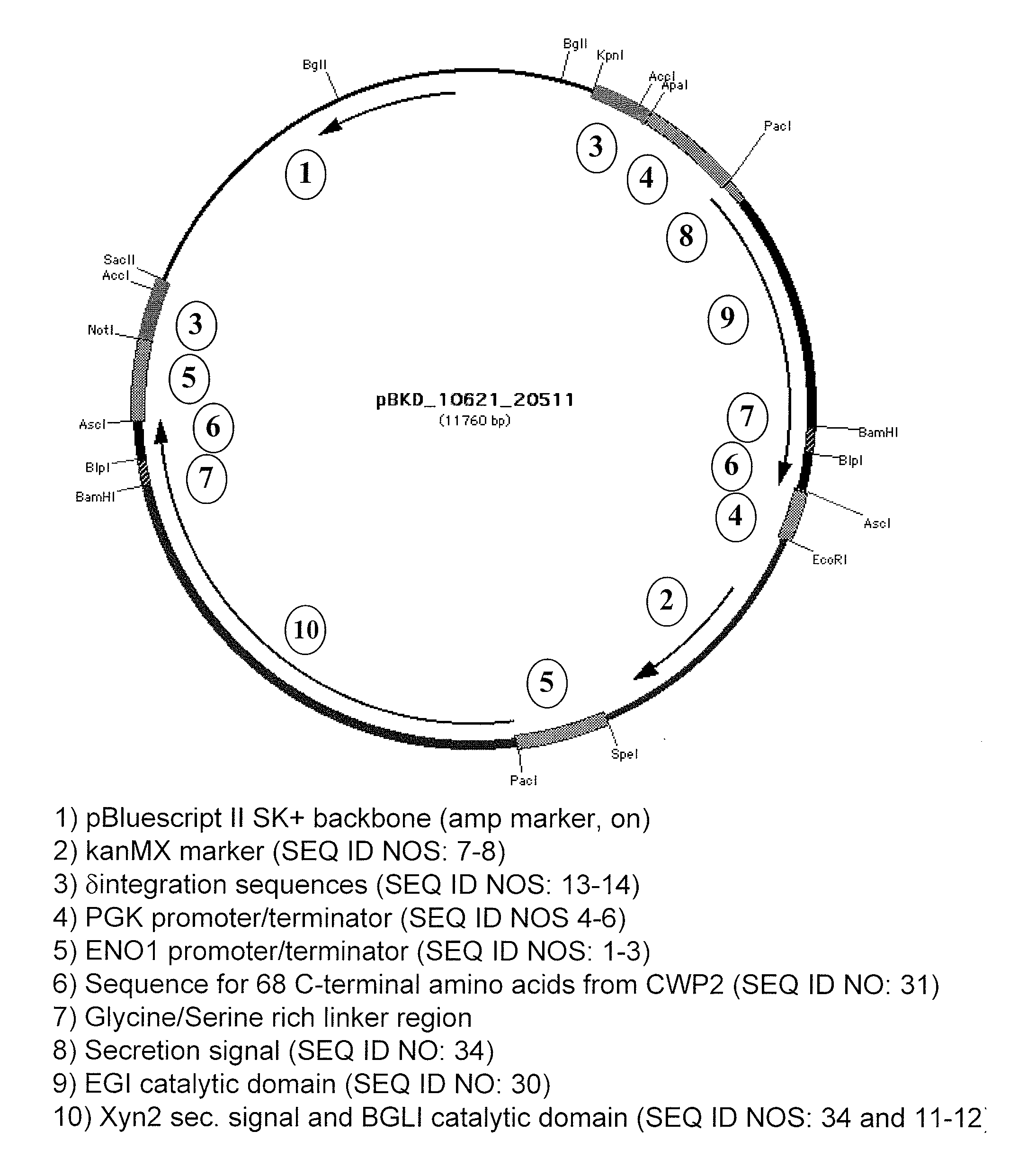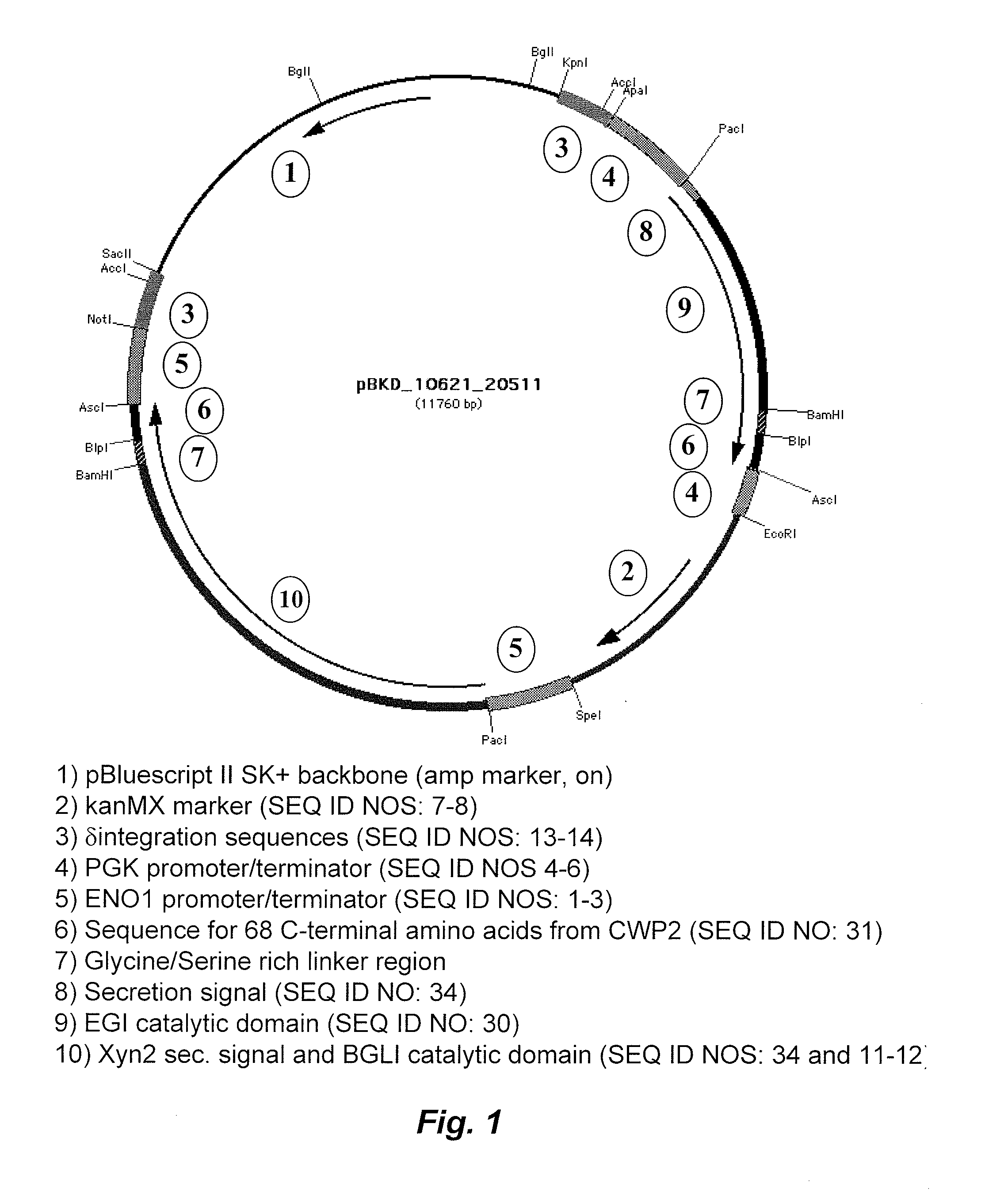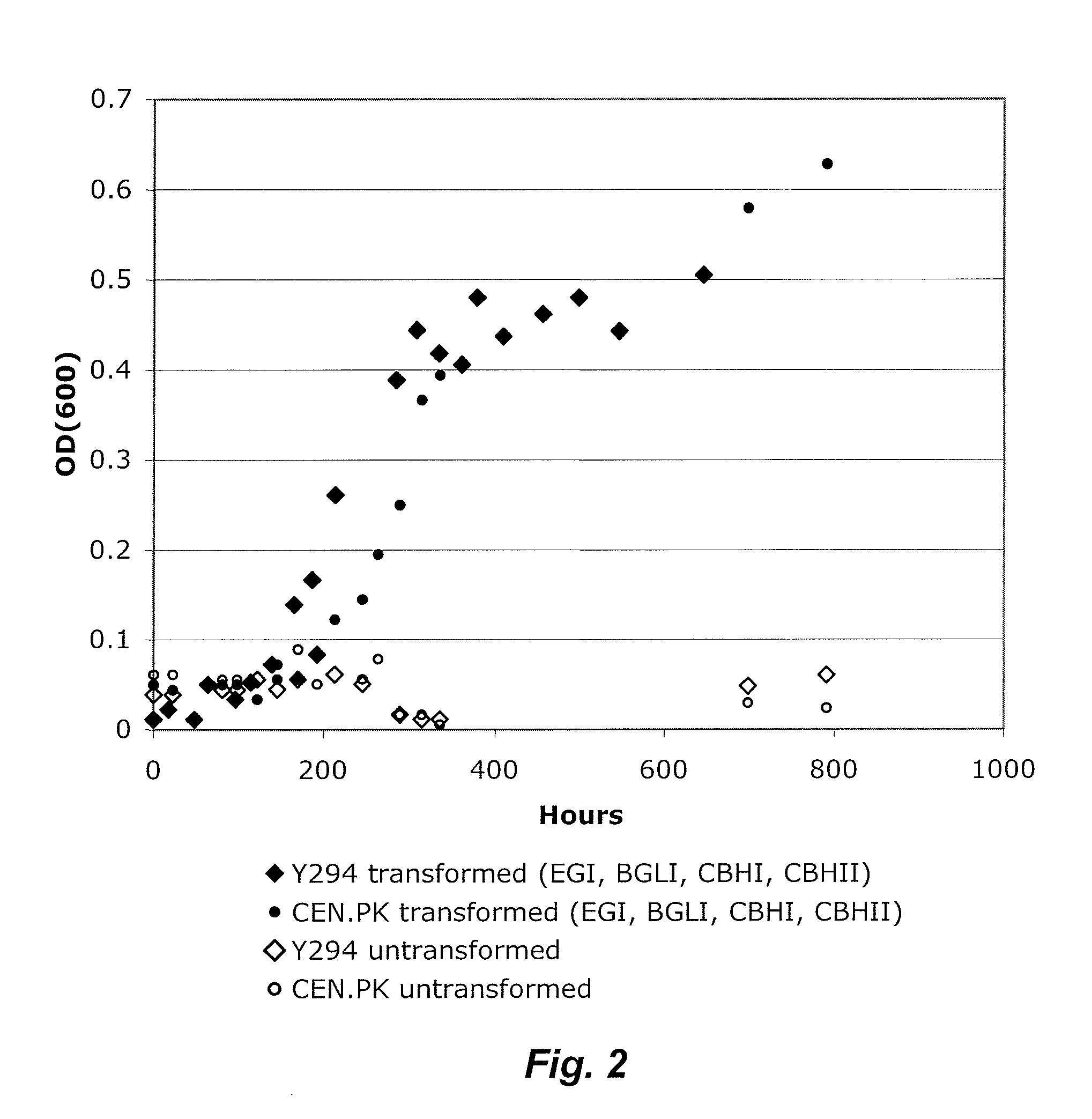Recombinant Yeast Strains Expressing Tethered Cellulase Enzymes
a technology of tethered cellulase and recombinant yeast, which is applied in the field of biomass processing, can solve the problems of reducing the growth rate of organisms on cellulose, reducing and so as to achieve the effect of reducing the optical density of supernatants and increasing the binding affinity of insoluble cellulos
- Summary
- Abstract
- Description
- Claims
- Application Information
AI Technical Summary
Benefits of technology
Problems solved by technology
Method used
Image
Examples
example 1
Methods for Engineering Saccharomyces cerevisiae Strains with Tethered Cellulase Enzymes
Molecular Methods
[0040]Standard protocols were followed for DNA manipulations (Sambrook, J.; Fritsch, E.; Maniatis, T. Molecular cloning: A laboratory manual. New York: Cold Spring Harbor Laboratory Press; 1989). PCR was performed using Phusion Polymerase (New England Biolabs, Ipswich, Mass.) for cloning, and Taq polymerase (New England Biolabs) for screening transformants. Manufacturer's guidelines were followed as supplied. Restriction enzymes were purchased from New England Biolabs and digests were set up according to the supplied guidelines. Ligations were performed using the Quick Ligation Kit (New England Biolabs) as specified by the manufacturer. Gel purification was performed using either Qiagen or Zymo research kits, PCR product and digest purifications were performed using Zymo research kits, and Qiagen midi and miniprep kits were used for purification of plasmid DNA. Sequencing was per...
example 2
Saccharomyces cerevisiae Strains with Tethered Cellulase Enzymes Capable of Growing on Phosphoric Acid Swollen Cellulose (PASC)
[0056]Endoglucanase I (EGI), cellobiohydrolase I (CBHI) and cellobiohydrolase II (CBHII) from Trichoderma reesei, along with β-glucosidase I (BGLI) from Saccharomycopsis fibuligera, were expressed as tethered proteins to the Saccharomyces cerevisiae cell surface by fusion with the C-terminal portion of cwp2 from S. cerevisiae, as described above.
[0057]For growth experiments on phosphoric acid swollen cellulose (PASC) media, PASC was added as the sole carbon source to synthetic complete medium for yeast at a concentration of 20 g / L. Phosphoric acid swollen cellulose (PASC) was prepared as in Zhang, Y. H.; Cui, J.; Lynd, L. R.; Kuang, L. S. “A transition from cellulose swelling to cellulose dissolution by o-phosphoric acid: evidence from enzymatic hydrolysis and supramolecular structure” Biomacromolecules, 7, 644-648 (2006), with slight modification. Avicel PH...
example 3
Saccharomyces cerevisiae Strains with Tethered Cellulase Enzymes Capable of Growing on Bacterial Microcrystalline Cellulose (BMCC)
[0060]Endoglucanase I (EGI), cellobiohydrolase I (CBHI) and cellobiohydrolase II (CBHII) from Trichoderma reesei, along with β-glucosidase I (BGLI) from Saccharomycopsis fibuligera, were expressed as tethered proteins to the Saccharomyces cerevisiae cell surface by fusion with the C-terminal portion of cwp2 from S. cerevisiae as described above.
[0061]For growth experiments in bacterial microcrystalline cellulose (BMCC) containing media, BMCC was added as the sole carbon source to synthetic complete medium for yeast at a concentration of 10 g / L. Bacterial microcrystalline cellulose (BMCC) was prepared in a similar manner to Jung, H.; Wilson, D. B.; Walker, L. P. “Binding and Reversibility of Thermobifida fusca Cel5A, Cel6B, and Cel48A and their respective catalytic domains to bacterial microcrystalline cellulose”Biotechnology and Bioengineering, 84, 151-15...
PUM
| Property | Measurement | Unit |
|---|---|---|
| pH | aaaaa | aaaaa |
| pH | aaaaa | aaaaa |
| concentration | aaaaa | aaaaa |
Abstract
Description
Claims
Application Information
 Login to View More
Login to View More - R&D
- Intellectual Property
- Life Sciences
- Materials
- Tech Scout
- Unparalleled Data Quality
- Higher Quality Content
- 60% Fewer Hallucinations
Browse by: Latest US Patents, China's latest patents, Technical Efficacy Thesaurus, Application Domain, Technology Topic, Popular Technical Reports.
© 2025 PatSnap. All rights reserved.Legal|Privacy policy|Modern Slavery Act Transparency Statement|Sitemap|About US| Contact US: help@patsnap.com



